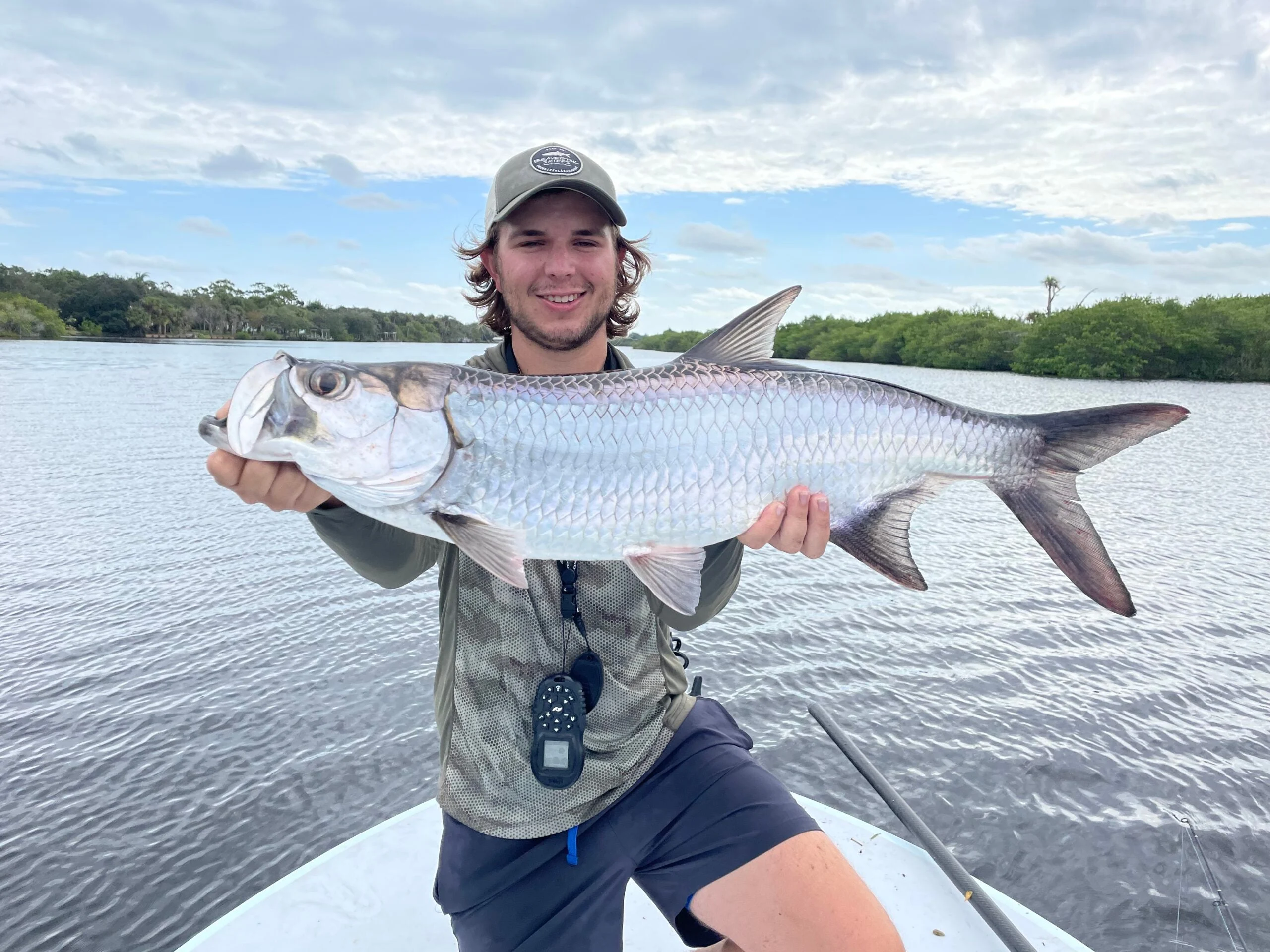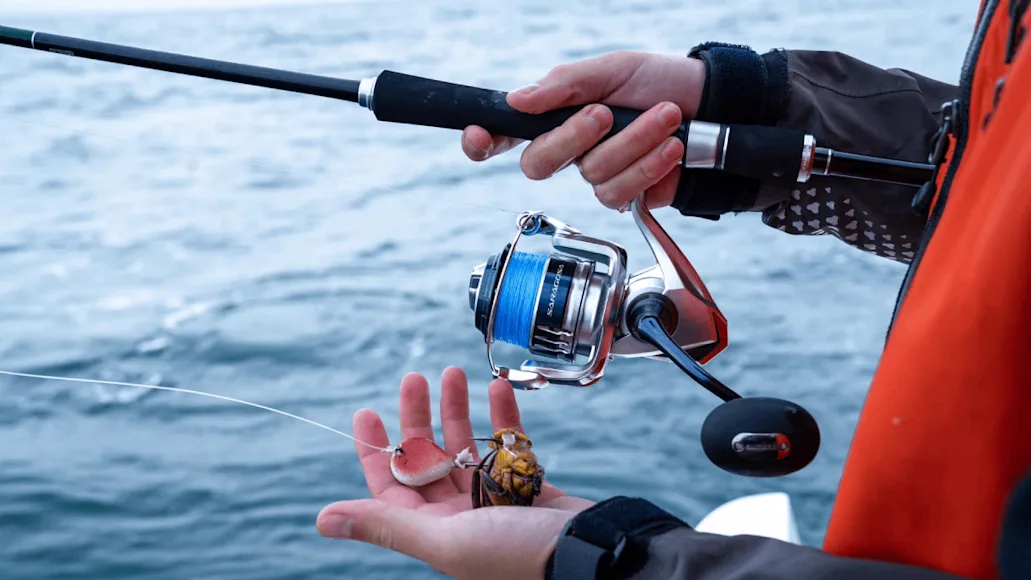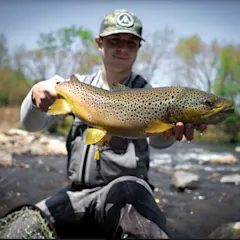We may earn revenue from the products available on this page and participate in affiliate programs. Learn more
Inshore spinning reels have a tough job battling big fish on light tackle. Their offshore cousins are too heavy for practical use and freshwater reels lack the drag to stop blistering runs. With modern engineering and new materials, a fleet of well-balanced inshore reels has hit the market. These reels pair well with light rods for long and accurate casts. No matter how good a reel feels, standing up to big fish, corrosive salt, and sand presents its own set of challenges. Reels with strong drags, corrosion-resistant designs, and weight-saving components are crucial. Below are the best inshore spinning reels that are up to this set of challenges.
Best Overall: Daiwa BG MQ
Most Durable: Penn Authority
Best Shimano: Shimano Saragosa SW
Best Lightweight: Shimano Spheros SW
Best Penn: Penn Clash II
Best Overall: Daiwa BG MQ Spinning Reel
Specs
Line Capacity: 280 yards of 20-pound power pro
Gear Ratio: 6.2:1
Max Drag: 26.4 pounds
Pros
Oversized spool
Monocoque body
Improved water sealing
Cons
On the heavier side
The BG MQ is Daiwa’s answer to an affordable inshore reel that incorporates technology from its flagship models. The MQ stands for monocoque which refers to the construction of the frame. Traditional spinning reels have screws to seal the drag components together. This acts as a weak point that can allow saltwater to sneak in. The monocoque frame eliminates screws allowing for bigger gears and a lighter reel. Built as an oversized reel, this technology reduced weight by 4 ounces compared to the standard BG. On the water, the feel of it immediately stands out. The oversized handle fits comfortably in your hand. This gives you plenty of control when throwing big baits and fighting powerful fish. The retrieve is smooth and the drag is crisp with low startup inertia. It has plenty of line capacity and more than enough power to handle tarpon and other big fish.
Most Durable: Penn Authority Spinning Reel
Specs
Line Capacity: 380 yards of 30-pound power pro
Gear Ratios: 4.2:1 – 6.2:1
Max Drag: 40 pounds
Pros
Fully sealed body and spool
Lightweight
Versatile (offered in multiple sizes)
Strong drag
Cons
Expensive
The reason this Penn spinning reel previously won one of our "Best of the Best" awards is pretty simple: The Authority is one of the most versatile, durable, and reliable saltwater reels on the market. I spent two months in Florida fishing with the Authority, and it never once let me down. It has a fully sealed spool and drag so anglers don’t have to worry about dunking it underwater—the Authority can be submerged up to 1 meter for 30 minutes without water intrusion.
The Authority is also made from a solid piece of metal with a stainless-steel gear train and pinion gear, only adding to its durability. I had no issue bombing casts as well as softly pitching baits under docks. The lightweight design makes it comfortable to fish with all day, and I found the oversized handle helpful. The reel comes in many sizes—2500 to 10500—making it ideal for inshore fishing. I like the 4500 series for snook, redfish, striped bass, and medium-sized tarpon.
Best Shimano: Shimano Saragosa SW 5000 Spinning Reel
Specs
Line Capacity: 225 yards of 30-pound power pro
Gear Ratio: 6.2:1
Max Drag: 22 pounds
Pros
IPX8 Water-Resistant Body
Increased winding torque
Large line capacity
Cons
The smallest size offered is a 5000
A staple in Shimano’s saltwater lineup, the Saragosa was designed to be smooth and stay that way. Featuring Hagane cold forging construction the reel body eliminates flex while creating a rigid reel. While slight, any mechanical advantage you can get over a fish is huge. Paired with Hagane gears and infinity drive technology this reel has an impressive amount of torque. For trophy fish like tarpon, this is my preferred reel. Stopping them around bridges and structures is crucial. I can fish heavier lines with its cross carbon drag system that puts out 22 lbs of max drag. The reel is IPX8 rater to keep water out in the worst conditions. While you may spend a little more upfront, the Sargosa’s construction allows you to fish for years without sacrificing performance.
Best Lightweight: Shimano Spheros SW Spinning Reel
Specs
Line Capacity: 200 yards of 10-pound power pro
Gear Ratio: 6.2:1
Max Drag: 20 pounds
Pros
Metal frame
Optimized spool design for longer casts
Lightweight
Cons
3000 is the smallest size available
The Spheros is one reel that never got the attention it deserved. It features Aero Wrap II technology to manage spool speed and lay down the line in a particular pattern. Combined with a new spool design, Shimano built this reel to optimize casting distance. Flats fish are spooky so the further your lure is from the boat the better. The lightweight metal frame pairs well with a 7-foot medium or medium heavy rod. A sealed drag capable of outputting 20 pounds of max drag is built for inshore fish like striped bass, redfish, and snook. If you dial in the drag micro adjustments correctly you can tire out big fish quickly on light line.
Best Penn: Penn Clash II Spinning Reel
Specs
Line Capacity: 250 yards of 15-pound power pro
Gear Ratio: 6.2:1
Max Drag: 12 pounds
Pros
Impressive build quality
Carbon fiber drag system
Available in multiple sizes for all inshore scenarios
Cons
High-speed models only available in certain sizes
The Penn Clash II has found its way onto my boat due to its lightweight feel and powerful drag system. The main gears are CNC cut to fit together perfectly. This creates a smooth and durable reel. Paired with a carbon drag system it has plenty of stopping power for any inshore fish. I can attest to this when I hooked an unexpected tarpon on a 3000-size reel and had it boat side in ten minutes. All this is sealed with Penn’s Clutch armor system to keep sand and salt out. The reel is one of the most comfortable I’ve used. It reels smoothly and lays line evenly with a slow oscillating spool. The molded foam handle fits firmly in your hand and maximizes your control over powerful fish.
How We Picked the Best Inshore Spinning Reels
I spend most of my free time exploring the shallow water flats in South Florida. During my time here, I’ve learned the importance of a good inshore reel. Battling salt, sand, and wind are tough on gear, so investing in a quality reel is important. The top reels on my boat must be corrosion resistant, have a strong drag, and incorporate weight-saving components. Saltwater fishing reels with all three last longer and have the power to tame big fish. Here are the criteria I based my selections on:
Drag Power: How many pounds of max drag can the reel deliver?
Corrosion Resistance: Does the reel feature corrosion-resistant materials and parts?
Sealed Drag: Is the drag sealed from water getting in?
Weight Savings: What weight-saving materials are incorporated?
Winding Toque: How much winding power does the reel have?
Casting Distance: What features aid in casting distance?
Feel: How smooth is the reel and how does it fit in your hands?

What To Consider When Choosing an Inshore Spinning Reel
A reel’s main purpose is to manage your line as you fight a fish. Companies may take different approaches in designing reels but in the end, they must protect your line. The three main components of a spinning reel are the frame, spool, and handle. Altering these components results in reels that feel vastly different even in the same lineup. Take this into consideration when picking out a new reel and always hold a few different options. The reel that fits you the best will perform the best on the water.
Reel Design
The design of a reel will determine how it performs on the water for you. Things like handles, spool shape, and reel frame vary between companies and models. Depending on your preferences one may feel better than another. When you’re fighting big fish, a comfortable reel is important. It will help you tire out the fish faster and feel better casting all day. To find the reel that feels best you have to test them out. Grab a rod off the shelf and try a variety of reels until you find what fits the best.
Reel Size
Sizing your reel properly to the species you target is key to success. You want a reel that has enough line capacity without being too heavy. For most inshore application reels, 2000 to 4000 sizes are plenty. These sizes have enough line capacity and drag systems that can handle long runs. If you target fish like tarpon, a 5000 or 6000 reel gives you more drag and added line capacity. One thing to consider is reel sizing will vary widely between companies. A 4000 size Shimano may be way smaller than a 4000 size Daiwa. Looking at the reel you want in a person is a sure way to find the properly sized reel.
Corrosion Resistance
The combination of salt, sand, and wind destroys reels that aren’t built with corrosion resistance in mind. Luckily modern materials and engineering have created reels that are almost impenetrable. These reels feature rust-resistant coatings and aluminum frames to minimize corrosion. Inside the reel, sealed drag systems keep salt out even when fully submerged. While sealed, a good rinse of freshwater after fishing ensures your reel is ready to perform on the next trip.
FAQs
Q: What reel size is best for inshore fishing?
For inshore fishing, my preferred reel size is a 3000. This size offers enough line capacity and respectable drag systems to handle most inshore fish. Snook, redfish, striped bass, and fluke can all be targeted with a 3000. For bigger fish like cobia and tarpon, a 5000 reel is better suited. These reels hold an abundance of line and can handle throwing big baits. They also have beefed up drag systems to withstand long fights and blistering runs.
Q: What line should I use for inshore fishing?
My go-to line for inshore fishing is the braided line. Its thin diameter allows you to fit more line on the reel and cast it further. Braid also has no stretch for better hookups. When you set the hook on a fish you get an instant connection. I typically fish 15-pound power pro on my standard inshore setups. It has plenty of tensile strength to handle big fish without sacrificing casting distance. For larger fish, I will go up to 40-pound test. With all braided lines, I fish a fluorocarbon leader from 3 to 5 feet in length. The leader material is abrasion resistant and can handle fish teeth better than braid.
Q: How much drag do I need for inshore fishing?
Inshore reels vary in drag between reel sizes and companies. Rarely am I locking down a drag system so reels with 10 to 20 pounds of drag work for me. These have plenty of stopping power when you need it. I find drag adjustability to be the most important factor. Reels with micro-adjustments allow you to fine-tune how much drag is applied. This gives you the edge over fish and tires them out quicker.
Q: What is the best gear ratio for inshore spinning reels?
I find gear ratio to be less of a factor in inshore fishing. If you are fishing live bait, most of the time your bait is sitting so the gear ratio has little impact. For anglers fishing artificials, reels with a gear ratio between 5.6:1 and 6.2:1 offer a good speed retrieve. There are reels with retrieves as high as 7.2:1 for those wanting to burn back a bait. This can be helpful when fishing lures like Cuda tubes that need to be worked as fast as possible.
Q: How do I maintain my saltwater spinning reel?
The most important thing to do in order to maintain any saltwater reel is to wash it down with fresh water after every use. Saltwater is extremely corrosive and is known to destroy fishing gear. Rinse your reels after every trip, especially if the reel was submerged.
Final Thoughts
Of all the gear used for inshore fishing, reels are the most important. The fish are powerful and conditions are harsh on gear. While there are plenty of cheap reels available, spending a little more on inshore-specific reels goes a long way. These reels have strong drags, are corrosion resistant, and have weight-saving parts. On the water, they help you cast further and put fish in the boat.
Why Trust Us
For more than 125 years, Field & Stream has been providing readers with honest and authentic coverage of outdoor gear. Our writers and editors eat, sleep, and breathe the outdoors, and that passion comes through in our product reviews. You can count on F&S to keep you up to date on the best new gear. And when we write about a product—whether it’s a bass lure or a backpack—we cover the good and the bad, so you know exactly what to expect before you decide to make a purchase.







